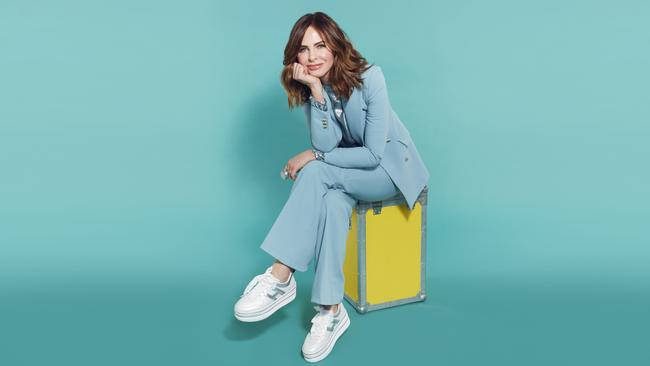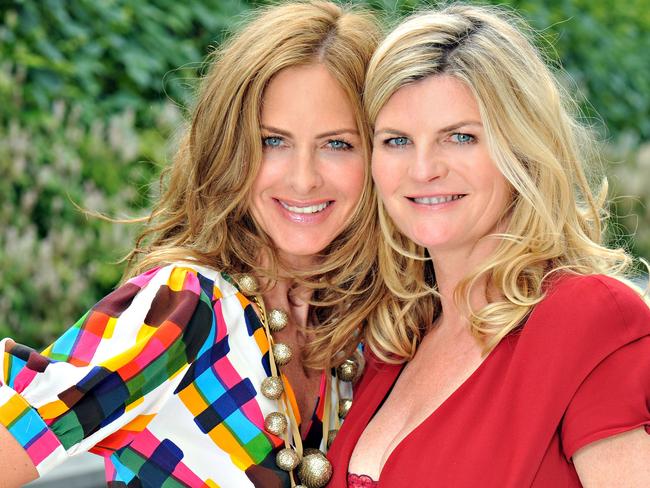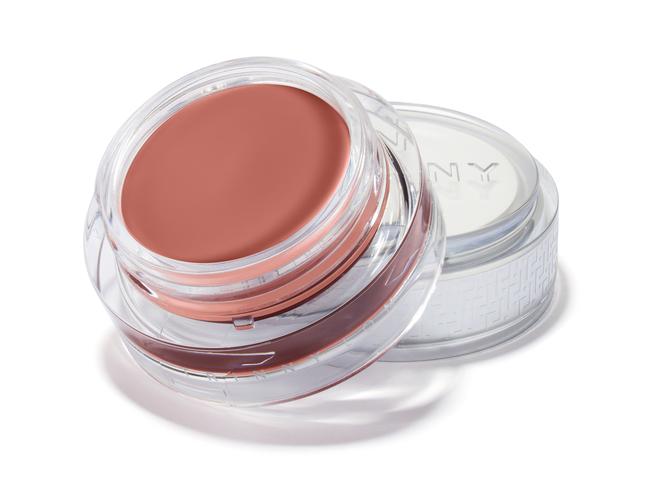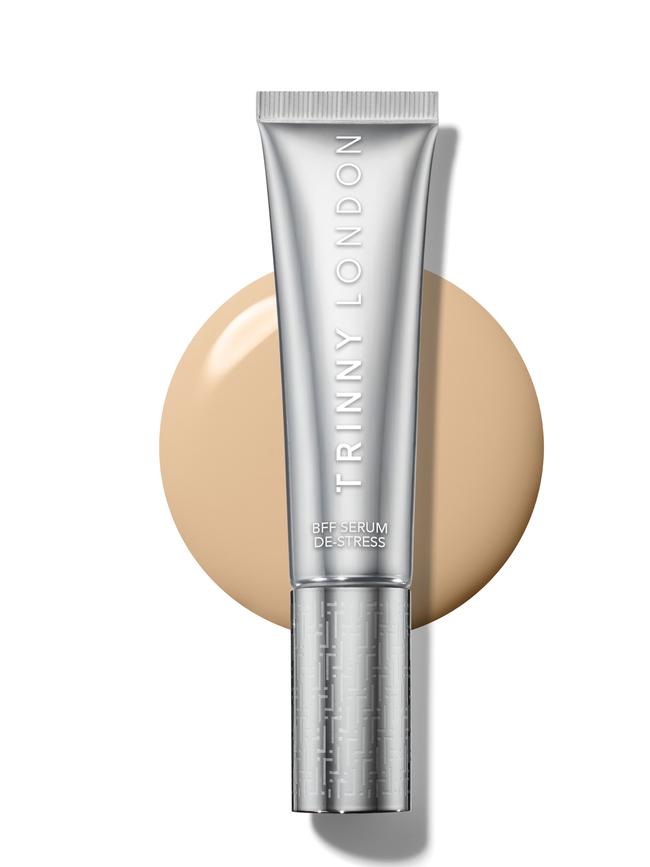Trinny Woodall’s secret ingredient is her frank advice
From fashion guru to make-up mogul, Trinny Woodall’s secret ingredient is still her frank advice | WATCH

I’m not sure how many of you have ever found yourself scrolling through social media late at night, only to stumble on one of Trinny Woodall’s Instagram videos and subsequently go down the rabbit hole of self-betterment through beauty and fashion.
As Woodall suggests, there are quite a few Australian fans who actively seek them out — and she thanks you.
A few times a week she takes to her preferred platforms with live videos, in which she happily chats to her “Trinny Tribe”.
“(The Australians) are always the ones there,” she tells me. “They’re like, ‘I’m in Melbourne, I’m in Adelaide!’ I love that these women are there. We talk and I feel I get to know them.”
We’re on a Zoom call, Woodall’s morning in London, and my Sydney evening, and she’s as exuberant and effusive as she is in any number of those videos.
Full of advice, asides, insight and, frankly, she seems exactly the woman you would want in your corner in an hour of need. The sort of woman who gets shit sorted out and makes you feel all the better in the process.
Woodall first came to public prominence in the early 2000s via the popular British TV show What Not To Wear, a two-hander with Susannah Constantine in which they would make over all manner of women in their frank but embracing way.
As well as co-authoring a number of books, they expanded into makeover tours and have made several trips to Australia, crisscrossing the country for live events at Westfield centres.
And while that show finished up in 2005 (followed by Trinny & Susannah Undress…), Woodall has since translated her popularity and wisdom into a new range of beauty products, Trinny London, which she launched in 2017.

And it was the women she made over during those fashion years that were the inspiration for the new business and, undoubtedly, the reason for its success.
“What they’ve told me is why I made the brand: ‘I go up to all those beauty counters and there’s a girl behind the counter and I don’t identify with her – she’s too old, too young, she’s got too much make-up on, she’s got too little make-up on, there’s 3000 lipsticks to choose from, which one do I suit?’”
She says it’s an experience she could relate to “100-fold” and she set out to make “the best bloody make-up, cream-based, easy to apply”, but also one that did even more than just make women look good.
“I’ve done so much shit in my life I want to be more than just a beauty brand. I want to be a thing that makes women inspired and feel better about themselves.”
The approach worked. Along with the cream formulations, which are buildable and easy to apply with your fingers, as promised, the concept of individual stackable pots that you can click together, mix and match, and throw in your clutch for a night out was something deliciously new — and utterly practical.

I ask if she might do a five-minute video makeover for this interview.
While she is already wearing mascara and her BFF Cream SPF30 (less a foundation than a “glow enhancer”), Woodall does a quick make-up to complement her plum-coloured ensemble for the day. The application takes precisely 1min 28sec. Granted, she’s had plenty of practice, but it’s impressive nonetheless.
Woodall says that the company has grown “four times every year since we launched”, something that her major investor must be happy about. (A Forbes article from 2018 said that the company “smashed investor targets”, making £1m in revenue, or $A1.75m, in its first five months.)
And the global pandemic hasn’t stifled things — it has only accelerated growth for the online-only brand.
“All those women who were waiting for us to come to a store near them thought, ‘I’m going to buy it online’,” Woodall says. “And that has been incredible. COVID doubled our business.”
That is even more interesting when you consider that Trinny London has a market “sweet spot” that is not driven by Millennials or Gen Z consumers, who are happiest in the ecommerce realm. “We are for every age, but we have this sweet spot of about 35 to 60-year-old women — and 70, 80-year-old women.”
The advice part of the package comes with the Match2Me element of the online store where, after answering a range of simple questions about skin tone, eye and hair colour, you are shown colour ranges to suit.
“That took a lot of behind-the- scenes tech to build, (but) for us it was a really pivotal point. I wanted to have really strong foundations and I wanted women to say, ‘You know, this really helped me’ — that amazing endorsement of a woman who has really felt we’re more than just a beauty brand.”
The endorsements aren’t just from the women who love the brand. On December 9, Woodall won both an Achiever Award and the Digital Innovation Award for Trinny London at the Cosmetic Executive Women 2020 Awards.
“This for me was a really big deal, the industry acknowledging (my work). And they’ve never had one company win two awards. Which was kind of a big deal.”
With the New Year upon us, it would seem foolish to have time with Woodall and not ask for some advice for the women of Australia. After all, the New Year can bring with it a desire to overhaul things — including your make-up bag.
What constitutes a make-up rut?
I have this theory. I think men dress and keep dressing in the era they felt most sexually confident. That’s why you get some guys who had that in the 70s and the dressing’s now a bit dodgy. Then you have women who got to a stage, probably sometime in their 20s, and they’re like, “I’m there” — they’re feeling that first moment of confidence. And whatever make-up they took to, those things become really good friends. And then they become old friends. And then they become friends we should get rid of. But we don’t know how because we haven’t met new friends. And depending on the eras there are different things. (Women ask me about their look) and I go, “Darling, I know you felt phenomenal in 1988 and you went into Miss Selfridge and you got that Iron Maiden lip, because you’re still wearing a rendition of it.”
It’s like a map of how a woman feels. Like bronzer in the ’90s, women went like that (brushing whole face). Then there was the era when everyone was tired and (YSL’s) Touche Eclat came out and everyone used that — whatever their skin tone, there was one colour. So we felt to cover up under-eye dark circles we had to look like a panda. The other one is black eyeliner — those ’80s, ’90s looks — everyone had a black eyeliner moment, a Debbie Harry eyeliner or a later-60s black eyeliner.
You have that insight — how can other women recognise a beauty rut?
I think because they feel it emotionally. They look around and they don’t feel as ageless as they once felt. It could be that your teenage daughter is giving you shit, or suddenly you’ve turned into your mum — and you thought that was going to be another 10 years away. We can be coming out of a marriage, that will make you sit up; your kids can leave home, you can lose your job, or think: “I do not want to be in this rat race anymore of the job I have.” So all those things are the kinds of things that make us address where we’re at and how we’re looking and they’re all emotional things.
How do you get out of the rut?
If you’re a Melbournite, you’ve just got to go and get all the black clothing and put it in the back of your wardrobe. It’s about saying to yourself: “I’m feeling a bit flat and I need to give myself a little bump. And if I did it externally people will see me differently and it will actually help me to feel different about myself.”
Because when all of those emotional things that I described happen, a part of us kind of wants to hide away because we’re recovering, so we wear clothes that make us a bit more invisible. And what we need to do is say, “I’m here”. And even if you find it difficult to say, “Hi, I’m here, I want people to come and talk to me and help me” — colour can do that. Just wearing colours can make people come and talk to you. And if you don’t know where to go with colour, I’ve done 60 little films called Closet Confessions (on youtube.com) and I talk endlessly about what colours go with what colours.
As you get that confidence in colour, you might think, “I’m going to wear a bright lip. Or let’s look at my skin, let’s look at my skincare routine. Am I nurturing myself? Do I love myself enough to spend a little extra time to give myself a facial massage? Or learning what an acid is in my routine because it might take off years?” Once you get that glow to your skin underneath, you’re going to feel more energy and when we have more energy more things in our life are possible and we can make things happen.

What are your thoughts on foundation as you get older?
I had appalling skin from 18 to 30, I had very bad acne. So I wore a lot of fake tan — vomit — because I felt it blurred everything together like a pizza. And then I wore a lot of foundation just to cover it up. Then I woke up at 33, a year out of (acne medication) Roaccutane and I thought, “Why am I doing this? I don’t need to wear this base any more”. I see women who wear base because it made them feel safe, because their skin was very red or they had pigmentation or they had spots. And the biggest trick for me is to say to a woman, “Step away from powder and step away from that heavy base, because less is more when you’re older.” And as you go down that path of life when you hit 40, 45 and you feel, “OK, my face is different from that early-30 face,” you need to look at the fact that products shouldn’t be sitting in any new lovely little ridges on your face. And maybe step away from brushes. You’re one step away from feeling what you’re doing.
So although I love brushes — and Rae Morris, one of your best make-up artists, has the most incredible brushes — things like foundation if you put on with your finger you really blend it into your skin. You think: “OK, that’s enough now, where do I need it? I will look and think I want to have a glow to my skin, I want to look like I have a good skincare routine.”
What are your best sellers?
The BFF Cream SPF30 Skin Perfector — that’s like SPF30, glow and everything. And in September I launched BFF Destress, and I’m a bit obsessed. I just thought all these bloody brands that call themselves (skincare-make-up) hybrid — that’s such crap. They’re not active levels of ingredients, they’re just about functional and probably just about marketable.
So I found this ingredient, Neurophroline, that would reduce levels of cortisol, that stress-releasing fight or flight hormone and what it did to our skin. Because whenever I’m stressed my face gets dehydrated, I look wizened, and that is stress. And I thought I want to make a product that gives women really lovely, buildable coverage, so you can see their bloody skin and that would take away stress. (The tinted serum comes in 12 shades, from Alabaster to Ebony.) So we have 16.5 per cent active ingredients (in total). And that to me is where the company is heading. When you put it on it gives you coverage and after about an hour the Neurophroline kicks in. You’ve got Hyaluronic acid that kicks in straight away so you’re plump. After an hour the Neurophroline kicks in and you start to think, “I’m looking good!” (After) three months, we sell one of these every 90 seconds, and a BFF every minute. So it’s really catching up.
